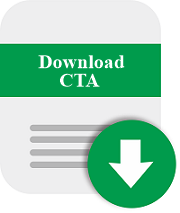Muzakki Potentials’ Role in Alleviating Poverty (Study Case in Aceh)
DOI:
https://doi.org/10.18196/ijief.2123Keywords:
Zakat Distribution, Muzakki, Poverty Reduction, Gross Domestic Regional Product, Number of Dependents.Abstract
Zakat is an obligation in Islam which commands the followers to pay a few money to the poor, the needy and other particular recipients determined by Qur’an. Since Zakat is obligatory only for the rich, the system should be able to reduce inequality and poverty. Aceh has implemented a zakat management program since 2006. Nevertheless, the impact of this program has not appeared. This study aims to analyze the impact of potential muzakki in Aceh to poverty reduction and identify the main factors contributing to the rise of muzakki. By using Socio-economic survey data from BPS-Statistics of Aceh Province, the potential of muzakki numbers can be estimated. Then, the impact on the poverty will be analyzed. The method used to identify the variables affecting the muzakki numbers is Multiple Linear Regression with Stepwise Selection method. The result shows that the potential muzakki in Aceh reaches 3 million people and able to reduce the poverty rate by approximately 3.25 percent. Subsequently, the economic size and the average number of dependents are the significant variables whose impact to increase the number of muzakki. For maximizing these opportunities, the data and program synchronization between the governments with zakat institutions are suggested.
References
Aceh, B. M. (2018). Yearly Report of Baitul Mal Aceh in 2017. 1(4), 53.
Afifah, N. (2017). Pengaruh Produk Domestik Bruto dan Indeks Pembangunan Manusia terhadap Jumlah Pemghimpunan Dana Zakat, Infak dan Shadaqah (ZIS) di Indonesia Tahun 2010-2015 [Institut Agama Islam Negeri Tulungagung]. In IAIN Tulung Agung. https://doi.org/10.1017/CBO9781107415324.004
Asdiansyuri, U. (2016). Influence Analysis Expenditure Zakat, Infak Welfare and Charity Against Muzakki (Studies In Baznas In West Lombok Regency). International Journal of Social and Local Economic Governance, 2(1), 23–31. https://doi.org/10.21776/ub.ijleg.2016.002.01.3
Beik, I. (2009). Analisis Peran Zakat Dalam Mengurangi Kemiskinan: Studi Kasus Dompet Dhuafa Republika. Pemikiran Dan Gagasan, 2(January 2009), 45–53. https://scholar.google.co.id/citations?user=osWmFrQAAAAJ&hl=en#d=gs_md_cita-d&u=%2Fcitations%3Fview_op%3Dview_citation%26hl%3Den%26user%3DosWmFrQAAAAJ%26citation_for_view%3DosWmFrQAAAAJ%3A9yKSN-GCB0IC%26tzom%3D-480
BPS-Statistics of Aceh Province. (2019). Aceh Province in Figures 2019.
BPS-Statistics of Aceh Province.
BPS-Statistics of Indonesia. (2018). Indonesia Population Projection 2015-2045 by The Result of SUPAS 2015. BPS-Statistics of Indonesia.
BPS-Statistics of Indonesia. (2019). Income Statistics August 2019 (Sub-directorate of Statistical Wages and Income (ed.)). BPS-Statistics of Indonesia.
Chaniago, S. A. (2015). Pemberdayaan Zakat Dalam Mengentaskan Kemiskinan. Jurnal Hukum Islam, 13(1), 47. https://doi.org/10.28918/jhi.v13i1.495
Draper, N. R., & Smith, H. (1998). Applied Regression Analysis Third Edition (Third Edit). John Wiley & Sons, Inc.
Huda, N., Anwari, B., & Kasman. (2013). Pengaruh Tingkat Pendidikan, Umur, Jenis Pekerjaan dan Pendapatan Terhadap Pemahaman Zakat Profesi studi Kasus Masjid AL-ABRAAR Pejompogan. 12(1), 24–39.
Khasandy, E. A., & Badrudin, R. (2019). The Influence of Zakat on Economic Growth and Welfare Society in Indonesia. Integrated Journal of Business and Economics, 3(1), 65. https://doi.org/10.33019/ijbe.v3i1.89
Majid, M. S. A. (2017). The Motivation of Muzakki to Pay Zakah: Study at The Baitul Mal Aceh. Signifikan: Jurnal Ilmu Ekonomi, 6(1), 159–176. https://doi.org/10.15408/sjie.v6i1.4302
Mubarokah, I., Beik, I. S., & Irawan, T. (2018). Dampak Zakat terhadap Kemiskinan dan Kesejahteraan Mustahik (Kasus : BAZNAS Provinsi Jawa Tengah). Al-Muzara’ah, 5(1), 37–50. https://doi.org/10.29244/jam.5.1.37-50
Musrizal. (2017). Peranan Zakat Dalam Mengurangi Tingkat Kemiskinan di Aceh Utara. Chemosphere, 7(1), 13–19. https://doi.org/10.1016/j.jenvman.2018.01.013
Nasution, E. Y. (2017). Pengaruh Pendidikan, Pendapatan dan Kesadaran Terhadap Minat Masyarakat Membayar Zakat di Badan Amil Zakat Nasional (BAZNAS): Studi Kasus Kota Medan. Ekonomikawan: Jurnal Ilmu Ekonomi Dan Studi Pembangunan, 17(2), 147–158. https://doi.org/10.30596/ekonomikawan.v17i2.1797
Pratama, S. D. (2013). Pengaruh degradasi lingkungan terhadap kemiskinan di indonesia tahun 2011. Polytechnic Institute of Statistics.
Pratama, S. D., & Rahadiana, R. (2019). The Evaluation of Indonesian Labour Market in Optimizing Demographic Dividend in 2016. JKAP (Jurnal Kebijakan Dan Administrasi Publik), 22(2), 84. https://doi.org/10.22146/jkap.29739
Pratama, Y. C. D. Y. Q. 2000. (2015). Peran Zakat Dalam Penanggulangan Kemiskinan (Studi Kasus : Program Zakat Produktif Pada Badan Amil Zakat Nasional). The Journal of Tauhidinomics, 1(1), 93–104.
Qanun. (2007). Qanun Aceh No 10 Tahun 2007 Tentang Baitul Mal. 1–33.
Saadillah, R., . K., & . F. (2019). Impact of Inflation, Interest Rate, and Industrial Production Index (IPI) on the Amount of Zakat in Central Baznas Period 2011-2017. KnE Social Sciences, 3(13), 1371. https://doi.org/10.18502/kss.v3i13.4291.
World Bank. (2009). Handbook on Poverty and Inequality. World Bank.
Downloads
Published
How to Cite
Issue
Section
License
License
This journal is based on the work available at http://journal.umy.ac.id/index.php/ijief/ under a license from Creative Commons Attribution-ShareAlike 4.0 International License.
You are free to:
- Share – copy and redistribute the material in any medium or format.
- Adapt – remix, transform, and build upon the material for any purpose, even commercially.
The licensor cannot revoke these freedoms as long as you follow the license terms, which include the following:
- Attribution — You must give appropriate credit, provide a link to the license, and indicate if changes were made. You may do so in any reasonable manner, but not in any way that suggests the licensor endorses you or your use.
- ShareAlike — If you remix, transform, or build upon the material, you must distribute your contributions under the same license as the original.
- No additional restrictions — You may not apply legal terms or technological measures that legally restrict others from doing anything the license permits.
Creative Commons Attribution-ShareAlike (CC BY-SA)

This work is licensed under a Creative Commons Attribution-ShareAlike 4.0 International License.


